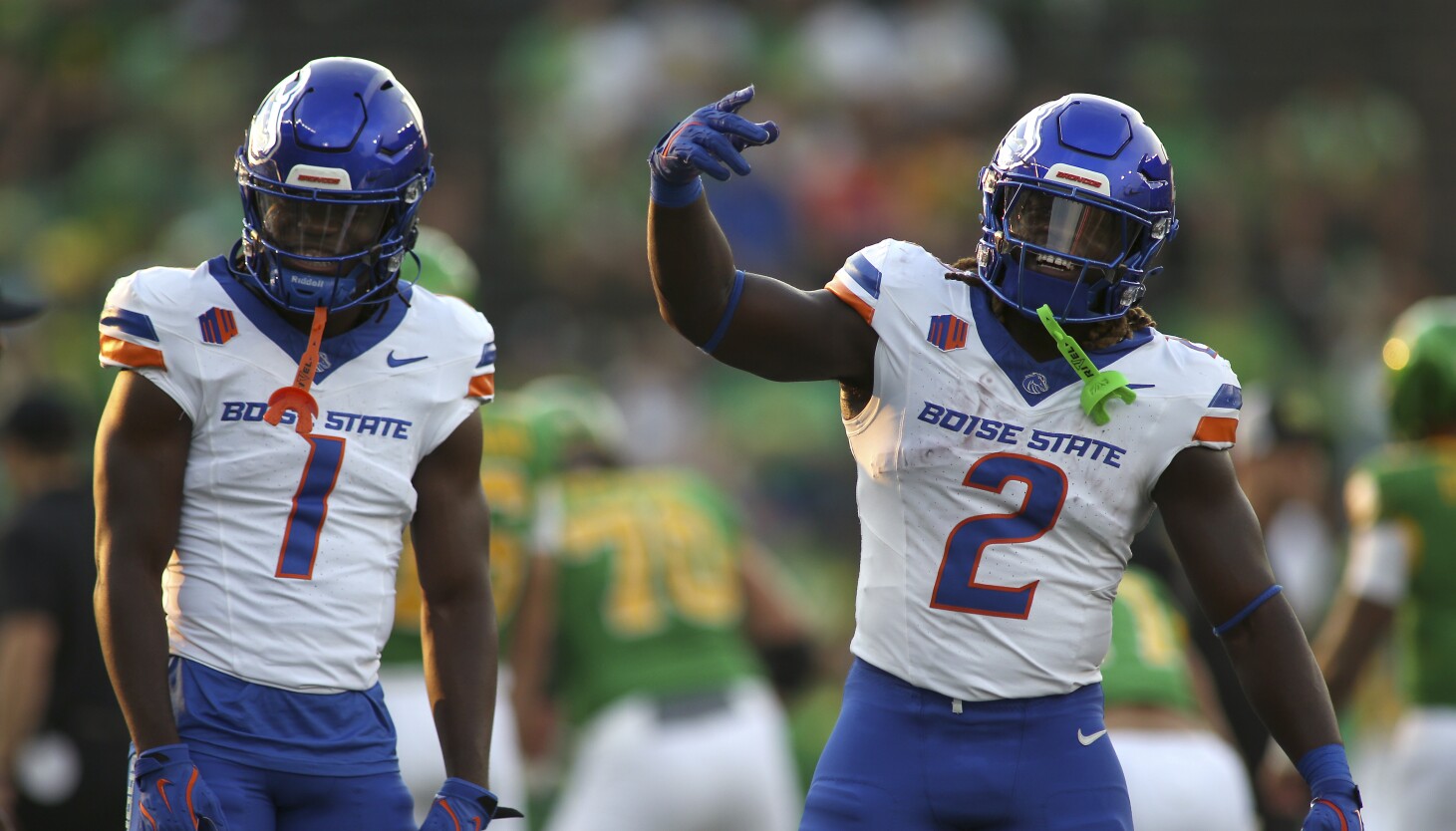The Pac-12 is adding Boise State, Colorado State, Fresno State and San Diego State, starting in 2026, to join Oregon State and Washington State in a rebuilt Conference of Champions, the league announced Thursday.
The additions rob the Mountain West of four of its more prominent schools and successful football programs, most notably Boise State, and still leave the Pac-12 two schools short of the eight it needs to have in place in two years to be recognized as a conference by NCAA rule.
The Pac-12 and the departing schools will likely be on the hook for about $110 million in exit fees and penalties to the Mountain West.
Still, it is a remarkable comeback for a conference left for dead a year ago when 10 members scattered to competitors across the country after it was unable to secure a media rights deal that schools believed would not keep them competitive with other leagues.
“For over a century, the Pac-12 Conference has been recognized as a leading brand in intercollegiate athletics,” Commissioner Teresa Gould stated. “We will continue to pursue bold cutting-edge opportunities for growth and progress, to best serve our member institutions and student-athletes.
“An exciting new era for the Pac-12 Conference begins today.”
The Pac-12 said it evaluated potential new members using five criteria: academics and athletics performance; media and brand evaluation; commitment to athletics success; geography and logistics; culture and student-athlete welfare.
Pac-2
Oregon State President Jayathi Murthy and Washington State President Kirk Schulz welcomed their new conference mates in a joint statement.
“We eagerly anticipate their uniquely insightful contributions during this transformative era for the conference and collegiate athletics,” they said.
The Pac-12 is currently operating as a two-school conference, with Oregon State and Washington State the only remaining members, taking advantage of NCAA rules that allow for a two-year grace period.
Oregon State and Washington State have a football scheduling agreement in place this season with the Mountain West, giving them six opponents from the league. The Sept. 1 first deadline for renewal of the agreement passed without a deal getting done.
Part of that deal included millions of dollars in additional fees for the Pac-12 if it poached Mountain West schools.
Oregon State and Washington State should be able to afford it. While the schools have publicly donwplayed having a warchest of funds, they do have tens of millions of dollars at their disposal to work with from the two remaining years of the current College Football Playoff agreement and a contract with the Rose Bowl that will expire after the 2025 football season. Plus, they have revenue accrued by Pac-12 teams in recent years from NCAA men’s basketball tournament units and Pac-12 Network assets.
Oregon State and Washington State also have an affiliate membership in place for this school year and next with the West Coast Conference for men’s and women’s basketball and other Olympic sports.
Best of the rest
Leaders at Oregon State and Washington State have insisted since the Pac-12 collapsed that unless an invitation came from a power conference their priority was to rebuild and now that has begun.
Whether the Pac-12 will be considered a power conference again, on par with the Big Ten, Southeastern Conference, Atlantic Coast Conference and Big 12, seems unlikely, but the league is trying to position itself as the best of the rest — especially in football.
Boise State is the most notable addition as the strongest and most consistent football program outside of the power conferences for more than two decades. The Broncos have 16 double-digit victory seasons since 2002, when they were members of the Western Athletic Conference.
“What a great day to be a Bronco!” Boise State athletic director Jeramiah Dickey said.
Boise State is finally moving up, but the Pac-12 it enters hardly resembles the Conference of Champions it was for more than 100 years following the departures of 10 members last year — including Southern California, UCLA, Oregon and Washington to the Big Ten.
The collapse of the Pac-12 was the culmination of three tumultuous years of conference realignment in college sports, all of which went into affect this year and ushered in the superconference era.
The Big Ten now has 18 schools, spanning from coast-to-coast. The ACC has 17 football-playing members, including former Pac-12 schools Stanford and California. The SEC and Big 12 each have 16 schools.
The Pac-12 appears to be taking a different approach, trying to build a slimmed-down conference instead of just merging with the full, 12-member Mountain West.
Left behind
The Mountain West will be left with Air Force, UNLV, Nevada, Utah State, New Mexico, Wyoming, San Jose State and Hawaii and an uncertain future.
Commissioner Gloria Nevarez said in a statement late Wednesday night after the news of the Pac-12’s move leaked that the MW’s board of directors was meeting to discuss the next steps.
“All members will be held to conference bylaws and policies should they elect to depart,” she said. “The requirements of the scheduling agreement will apply to the Pac-12 should they admit Mountain West members.”
